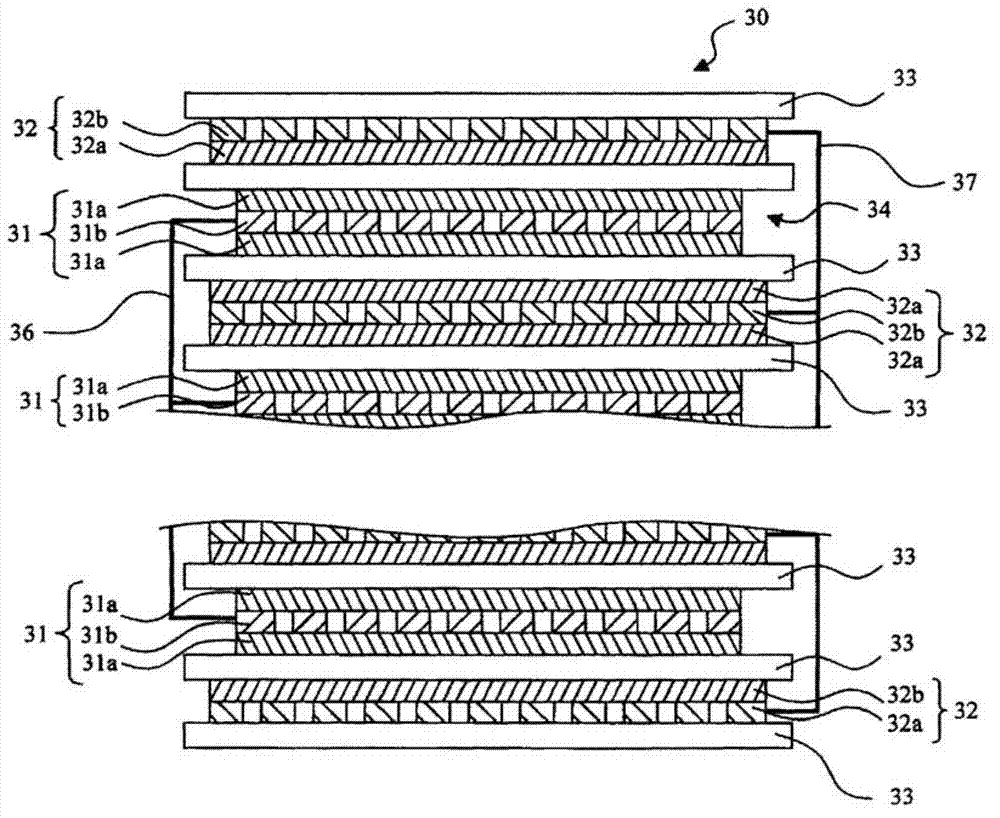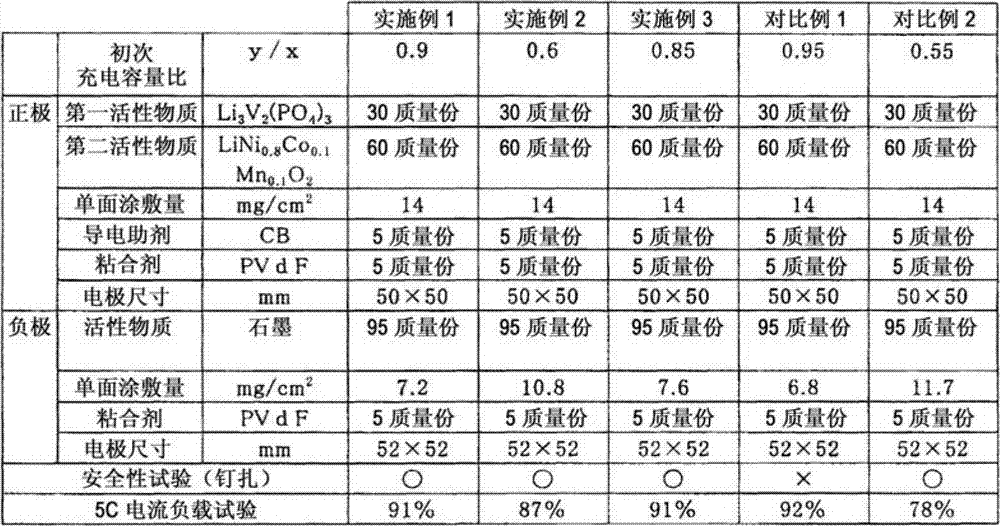Non-aqueous electrolyte secondary battery
A non-aqueous electrolyte, secondary battery technology, applied in secondary batteries, batteries, battery electrodes, etc., can solve problems such as ignition, achieve high output, high capacity, good charge-discharge cycle characteristics, and improve the effect of supply.
- Summary
- Abstract
- Description
- Claims
- Application Information
AI Technical Summary
Problems solved by technology
Method used
Image
Examples
Embodiment 1)
[0059] (1) Production of positive electrode
[0060] The following materials are used for the positive electrode composite material layer:
[0061] The first active material (Li 3 V 2 (PO 4 ) 3 ): 30 parts by mass
[0062] The second active material (LiNi 0.8 co 0.1 mn 0.1 o 2 ): 60 parts by mass
[0063] Binder (polyvinylidene fluoride (PVdF): 5 parts by mass
[0064] Conductive material (carbon black): 5 parts by mass
[0065] Solvent (N-methyl-2-pyrrolidone (NMP)): 100 parts by mass
[0066] Mix to obtain positive electrode slurry. The positive electrode slurry was applied on a positive electrode current collector of aluminum foil (thickness: 30 μm) and dried to form a positive electrode composite material layer on the positive electrode current collector. The coating amount (per side) of the positive electrode composite material layer is 14mg / cm 2 . The uncoated part of 10×10 mm was reserved as the tab for lead wire connection, and the coated part (the part ...
Embodiment 2)
[0080] Changed the coating amount (per side) of the negative electrode composite material layer to 10.6mg / cm 2 , so that the initial charge capacity of the negative electrode per unit area is set to x[mAh / cm 2 ], set the initial charge capacity of the positive electrode per unit area as y[mAh / cm 2 ], except that the relationship between x and y was y / x=0.6, all the conditions were the same as in Example 1, and batteries were produced and evaluated. The capacity retention rate was 87%. In the pinning safety test, the battery did not experience abnormal heating or fire.
Embodiment 3)
[0082] Changed the coating amount (per side) of the negative electrode composite material layer to 7.6mg / cm 2 , so that the initial charge capacity of the negative electrode per unit area is set to x[mAh / cm 2 ], set the initial charge capacity of the positive electrode per unit area as y[mAh / cm 2 ], except that the relationship between x and y was y / x=0.85, all the conditions were the same as in Example 1, and a battery was produced and evaluated. The capacity retention rate was 91%. In the pinning safety test, the battery did not experience abnormal heating or fire.
PUM
| Property | Measurement | Unit |
|---|---|---|
| particle size | aaaaa | aaaaa |
| particle size | aaaaa | aaaaa |
| thickness | aaaaa | aaaaa |
Abstract
Description
Claims
Application Information
 Login to View More
Login to View More - R&D
- Intellectual Property
- Life Sciences
- Materials
- Tech Scout
- Unparalleled Data Quality
- Higher Quality Content
- 60% Fewer Hallucinations
Browse by: Latest US Patents, China's latest patents, Technical Efficacy Thesaurus, Application Domain, Technology Topic, Popular Technical Reports.
© 2025 PatSnap. All rights reserved.Legal|Privacy policy|Modern Slavery Act Transparency Statement|Sitemap|About US| Contact US: help@patsnap.com



